Is My Brown Lawn Dead or Dormant?
We are no strangers to drought in recent years, and Summer 2023 is shaping up to be another dry one. You may have noticed around your neighborhood that there are a lot of brown lawns. Most of our yards in the Minneapolis & St. Paul metro contain “cool season grasses,” meaning they do well in cool and wet temperatures. As temperatures rise, these grasses will go into dormancy to conserve water and resources. While some of these brown lawns in your neighborhood may have gone dormant, some may have just died.
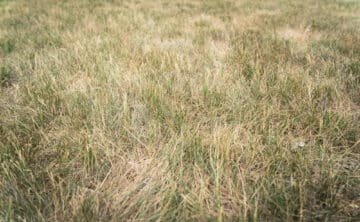
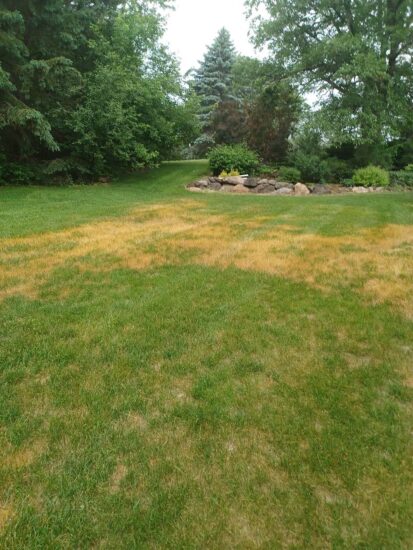
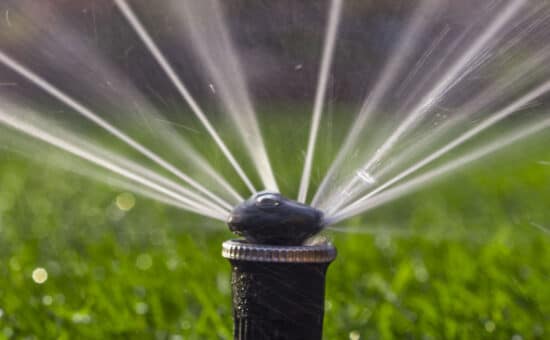
How do I tell the difference between a dead and dormant lawn?
The easiest way to tell if your lawn has just kicked the bucket is to pull on some blades of grass. If your lawn is dormant, you should feel some resistance from the roots still attached to the ground. This is because when the grass goes dormant, the roots are still alive and strong even though the top may be brown.
The grass will pull up with little to no resistance if your lawn is truly dead. It is best to rule out other common lawn issues first, such as pests and diseases, since these can also cause brown patches in your lawn. However, in times of extensive heat and lack of rain, it is a safe bet that your issue is water related.
Should I be watering my lawn during a drought?
You may want to be more environmentally conscious these days, so does it make sense to water your lawn if it will continue to be brown? The short answer: probably.
Going dormant is a normal aspect of our turf grasses, and all they need to break dormancy is an increase in water and some cooler weather. However, if your lawn has truly succumbed to the extensive drought we have been facing, no amount of water will bring it back. Your only option at that point is to re-seed or lay some sod.
With the current drought continuing into early summer, getting your seed to germinate may be more challenging, resulting in even more water being poured into your yard. During times of drought, it is essential to water every once in a while to ensure that the roots at least stay alive. If you are looking for the most effective way to water your lawn, check out our recent blog on proper watering techniques.
How can I protect a dormant lawn?
Across the Minneapolis and St. Paul metro, we experienced drought conditions in 2021 and 2022, and 2023 isn’t looking so great. Sometimes, the weather and the local water supply are beyond your control. If environmental concerns, high water costs, or water restrictions prevent you from watering your lawn as often as you’d like, there are simple steps you can take to save it:
- If possible, maintain a minimal watering schedule of ½” of water every 7-14 days. Your lawn will still look brown but will have a better chance of surviving the drought.
- You can easily damage a dormant, drought-stressed lawn, so it is best to stay off it as much as possible.
- Once the lawn receives water again, it should start to green up within 14 days.
- Areas that do not green up may need to be reseeded.
Conserve when you can!
Both for the health of your lawn, and your water bill, we’ve got some tips on how to conserve water when watering your lawn. Keep automatic sprinkler systems maintained and correctly set. A broken sprinkler head that shoots a stream of water into the street doesn’t do anyone any good, nor does one that runs during a rainstorm. Additionally, trees can be damaged from lawn watering that leaves their trunks wet over time or does not allow their roots to stretch out and grow between waterings.
This year may be discouraging because we never really enjoyed our lush green lawns, but they will bounce back once we get more precipitation. In the meantime, ensure your lawn gets enough water to remain dormant and clean the cobwebs from your rain gauge.
Environmentally Friendly Lawn Watering Tips
- Mow to a height of 2-3 inches, leaving taller grass blades to shade the soil and limit evaporation.
- Set an alarm to avoid forgetting that sprinklers are running.
- Use a sprinkler head that sprays larger droplets to avoid losing water through evaporation or wind.
- Consider seeding your lawn with drought-tolerant fescues.
- Maintain a minimum watering schedule of ½” every 7-14 days, as restoring a dead lawn will have a higher environmental impact than minimal watering.
Need help restoring your lawn due to the drought? We can help!
Other items you may be interested in:
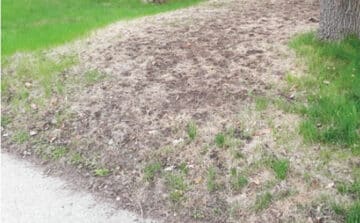
How to Fix Thin, Patchy Lawns
Frustrated by thinning grass under your trees or a patchy section on your lawn? A thin, patchy area in your Minnesota lawn can be caused
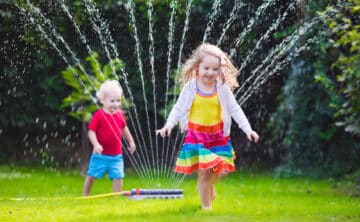
Tips for Watering Your Lawn in Minnesota
Why is watering your lawn important? Most living things require water to thrive, and your grass is no exception.
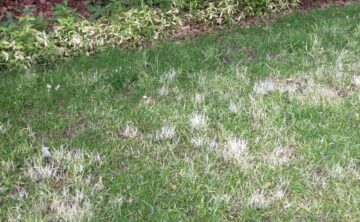
Common Lawn Issues in Minnesota
When you work so hard to maintain your lawn, you might dream of having it look perfect. In reality, even a well-maintained lawn in the



